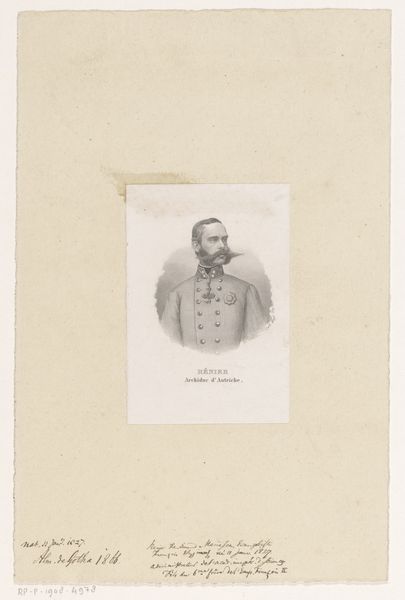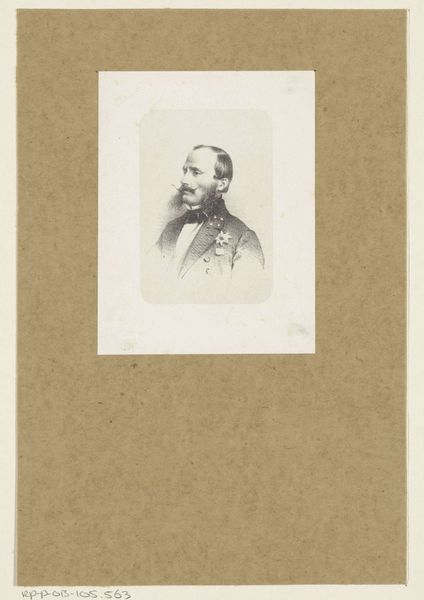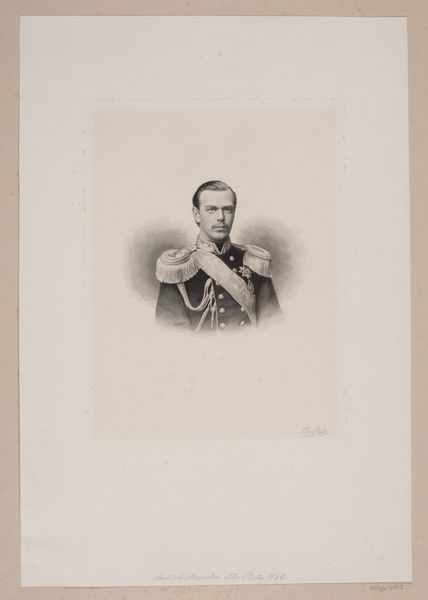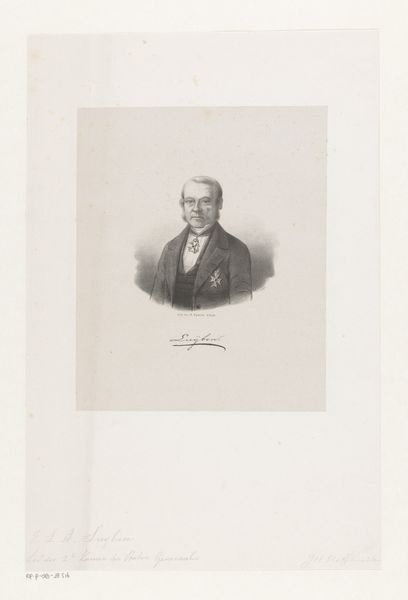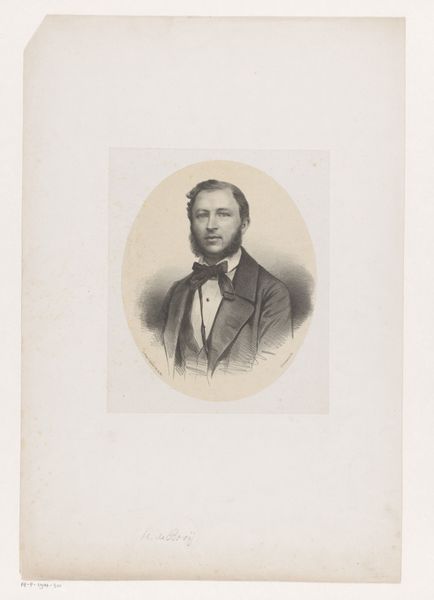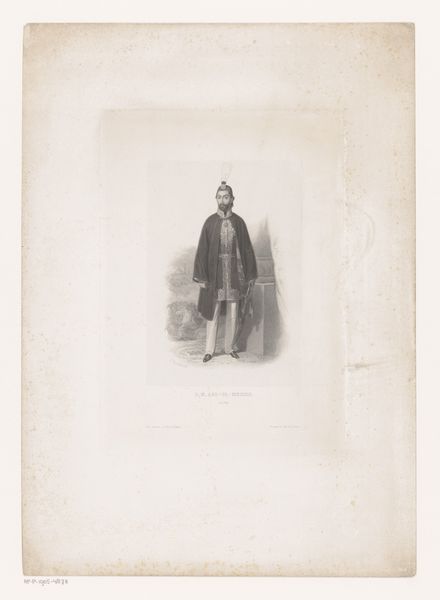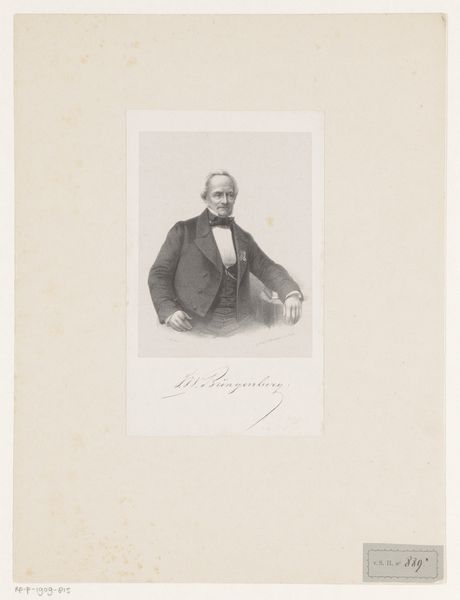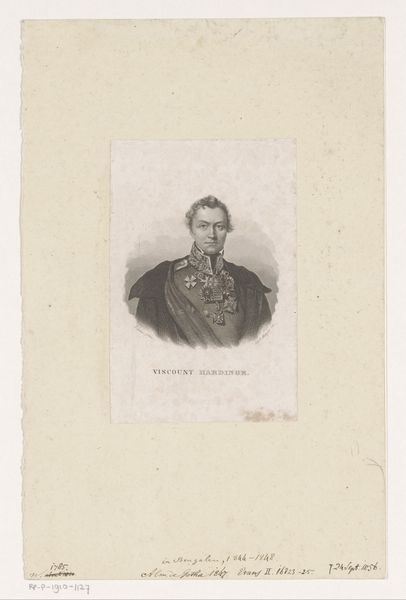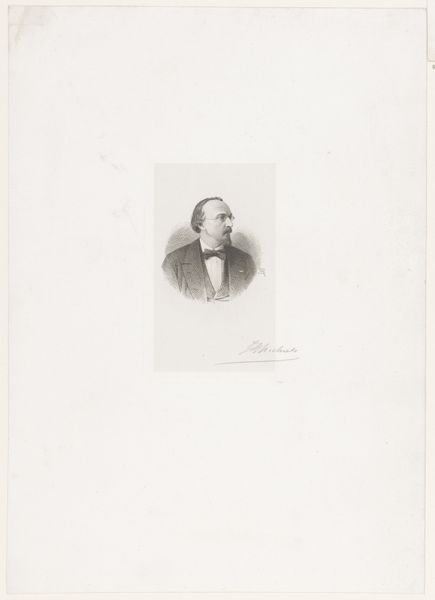
print, engraving
#
portrait
#
ink paper printed
# print
#
academic-art
#
engraving
Dimensions: height 107 mm, width 73 mm
Copyright: Rijks Museum: Open Domain
Curator: This print, held here at the Rijksmuseum, offers us a glimpse into 19th-century European royalty. The piece, entitled "Portret van Karl I, koning van Wurtemberg", was created in 1866 by Carl Mayer. The medium used was engraving. What are your initial thoughts? Editor: I am struck by its austerity. Even the rendering itself, being a print, reinforces that. It's a study in control and careful propagation of an image. All those repeated lines etched in ink, multiplied across however many impressions exist, create this powerful dissemination. Curator: Precisely. As an engraving, think about the skilled labor involved in its making. The meticulous transfer of image onto the printing plate, the physical act of carving—the labor itself is tied to propagating the power and likeness of Karl I. The industrial context is key here; a print meant for wide distribution. It served a very particular purpose. Editor: The portrait feels laden with signifiers. The king's stern expression, his heavy beard…and the weight of the numerous honors displayed on his uniform. Note how carefully arranged everything is to convey status. Those sashes and medals are deliberate symbols designed to speak to viewers and project power through those repeated motifs. Curator: It does make me consider the tension between accessibility and authority. A print like this made his image available to a wider public, yes, but ultimately it served to reinforce social hierarchies. I mean, even the paper and ink choices here... they aren't just neutral grounds, they're also material statements. Editor: Absolutely. Think about how uniforms traditionally operate, solidifying societal expectations about those deemed honorable and in power. Consider the symbolism behind the color and embellishments in the print. Color washes are now absent from our portrait and have been flattened into somber tones through the process. Curator: In the making of portraits such as these, one begins to really understand how much these items acted not only as commemorations, but almost as early forms of propaganda or advertisements for specific legacies or reigns. Editor: Yes. Considering all of these facets has given me new appreciation of not just who this person was, but all the details involved in shaping this deliberate representation of King Karl I.
Comments
No comments
Be the first to comment and join the conversation on the ultimate creative platform.

